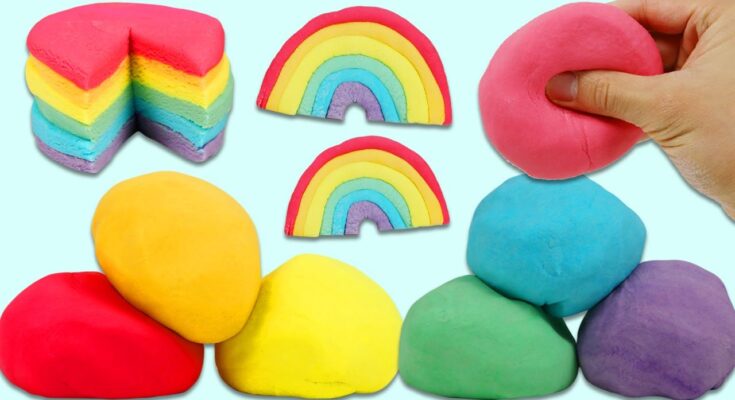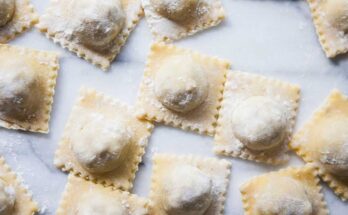Homemade Playdough Recipe: Playdough is more than just a fun craft material for kids—it’s a fantastic tool for promoting creativity, sensory development, and fine motor skills.
While store-bought options are convenient, homemade playdough is often cheaper, safer, and customizable.
This guide will walk you through creating soft, pliable, and vibrant playdough that kids will adore. Let’s dive in!
Ingredients for Homemade Playdough
Basic Ingredients Required
Making homemade playdough is simple and uses ingredients you likely already have in your kitchen. Here’s what you’ll need:
- Flour: The base for the dough, providing structure.
- Salt: Acts as a preservative and adds texture.
- Water: Helps bind the ingredients together.
- Cream of Tartar: Ensures elasticity and prevents crumbling.
- Vegetable Oil: Adds softness and prevents sticking.
- Food Coloring: For vibrant and fun shades (optional).
If you want to take it up a notch, you can add glitter, essential oils, or natural extracts to make your playdough unique.
Safe Alternatives for Sensitive Skin
For children with sensitive skin or allergies, you can tweak the ingredients:
- Gluten-Free Flour: Use alternatives like rice flour or cornstarch.
- Natural Food Dyes: Opt for beet juice, turmeric, or spinach for safe, natural coloring.
- Fragrance-Free Options: Avoid essential oils if there’s a risk of skin irritation.
Tools and Materials Needed
Essential Kitchen Tools
To make playdough, you’ll need a few basic tools:
- Mixing bowl
- Measuring cups and spoons
- Wooden spoon or spatula
- Saucepan (if cooking)
- Parchment paper for kneading
Storage Containers
Proper storage is key to keeping your playdough soft and fresh. Use airtight containers or resealable bags. Glass jars with lids work well, especially if you want a more aesthetic option for gifting.
How to Make Homemade Playdough
Step 1: Preparing Your Workspace
Clear a clean surface for making the playdough. If your kids are helping, make sure to supervise them and lay down some parchment paper to protect your counters. Gather all your tools and ingredients before starting to ensure a smooth process.
Step 2: Mixing the Ingredients
In a large mixing bowl, combine the following:
- 2 cups of flour
- 1 cup of salt
- 2 tablespoons of cream of tartar
- 2 tablespoons of vegetable oil
Slowly add 1.5 cups of warm water to the mixture, stirring continuously. This step is crucial for ensuring a lump-free consistency. If adding food coloring, mix it with the water beforehand for even color distribution.
Step 3: Cooking the Playdough
Transfer the mixture to a saucepan and cook over medium heat, stirring constantly. The dough will start to clump together and pull away from the sides of the pan. Once it forms a smooth, non-sticky ball, remove it from the heat and let it cool slightly.
Step 4: Adding Colors and Scents
Divide the dough into portions if you want multiple colors. Add a few drops of food coloring or essential oils to each portion and knead it thoroughly until the color is evenly distributed.
Step 5: Kneading and Final Touches
After cooling, knead the dough on parchment paper until it becomes soft and pliable. You can add glitter or adjust the texture by incorporating a bit more oil or flour as needed.
Fun Customization Ideas
Adding Glitter and Sparkles
Who doesn’t love a bit of sparkle? Add fine glitter during the kneading process for a magical touch. Choose non-toxic, biodegradable glitter for safety.
Seasonal and Holiday Variations
Use natural materials or seasonal dyes for festive themes. For example:
- Red and green playdough for Christmas
- Orange and black for Halloween
- Pastel shades for spring
Incorporating spices like cinnamon or nutmeg can add a lovely aroma to holiday-themed playdough.
Tips for Using Homemade Playdough
Creative Play Ideas
Homemade playdough opens the door to endless possibilities. Use cookie cutters, rolling pins, and molds to create shapes. Encourage kids to build imaginary worlds or make pretend food items.
Storing and Maintaining Playdough
To keep your playdough fresh, store it in airtight containers in a cool, dry place. If it starts to dry out, knead in a few drops of water or oil to revive its softness.
FAQs about Homemade Playdough Recipe
1. What ingredients do I need for homemade playdough?
To make homemade playdough, you typically need flour, salt, water, vegetable oil, and cream of tartar. For added fun, consider food coloring or glitter for a pop of color and sparkle.
2. Is homemade playdough safe for children of all ages?
Homemade playdough is generally safe for children, but it is best suited for kids over the age of 2. Always supervise young children during play to ensure they don’t ingest the dough, despite its non-toxic ingredients.
3. How long does homemade playdough last?
If stored properly in an airtight container, homemade playdough can last up to 3 months. Keep it in a cool, dry place to maintain its texture and prevent drying out.
4. Can I make playdough without cream of tartar?
Yes, you can make playdough without cream of tartar, although it helps improve the consistency and shelf life of the dough. Substitute it with an equal amount of lemon juice or vinegar to achieve a similar texture.
5. What are some fun variations of the basic playdough recipe?
To enhance the sensory experience, try adding scents like vanilla, almond, or peppermint extract. You can also mix in spices such as cinnamon or turmeric to create naturally colored playdough.
6. How can I revive dried-out playdough?
To revive dried-out playdough, knead a few drops of water into it until the consistency returns to its original softness. If it’s too dry, add a little more water gradually, but be careful not to make it too sticky.



